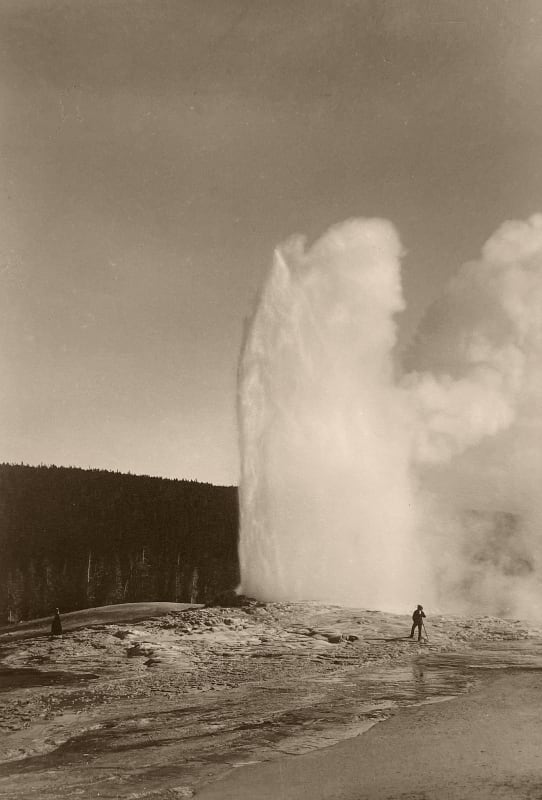F. Jay Haynes emerged as a pioneer of photographers capturing the American West during the expansion era of the late 1800s. Known for his entrepreneurial spirit, Haynes is accredited as the first official photographer of Yellowstone National Park where his family studio and concessions kiosk operated for multiple decades. Sourced directly from Haynes Studio, this trove of photographs provides a survey of the prolific photographer’s career in the age of Western exploration.
Haynes operated during a time of burgeoning interest in the Great Outdoors as a result of the rapid industrialization spreading across the United States. Natural attractions moved to the forefront of tourism as the arrival of photography introduced the beauty of the wilderness to urbanites and automobiles became increasingly affordable. Yellowstone was designated as the first national park of the United States in 1872 and Haynes was granted a studio in the park in 1884 by the Secretary of the Interior where he also operated a concessions kiosk. Haynes made trips every year to the park to take hundreds of photographs which would later be printed in journals and books as well as commercialized into souvenirs, such as stereoviews and postcards. His photographs gained icon status as they were some of the earliest mass circulated images of the park. The photographs of the Grand Canyon and Old Faithful shaped and supported the public opinion of the park during a formative time.
Born in Saline, Michigan in 1853, Frank Jay Haynes was first introduced to photography at an early age while living in Detroit. His entry into the professional world of photography began in Wisconsin, working at the Lockwood Temple of Photography. It was not until 1876 that Haynes would pursue his own photographic endeavor, establishing the first Haynes Studio in Moorhead, Minnesota. It was there he started his work documenting the Northern Pacific Railway operations and was later employed by the railroad to take press photos of the construction and railway scenes. Capitalizing on his relationship with the Northern Pacific Railroad, Haynes purchased his own railway car in 1885 that he used as a traveling photo studio, capturing the scenes across the NPR rail lines.
In 1881, Haynes found his way to Yellowstone where he applied to the Secretary of the Interior to fill the niche of official park photographer which was granted three years later. Haynes’s enterprises continued in the park until 1916 when the National Park Service was established and consolidated all park concessions. F. J. sold and relinquished his business to his youngest son, Jack Ellis Haynes, who would continue the Haynes studio operations and devise the park’s most successful guidebook; The Haynes Guide contained dozens of photographs taken by F. Jay of the landmarks as well as meticulous maps and terrain information recorded by Jack himself. Although retired, F. Jay continued to visit the park yearly to take photographs until his death in 1921. Jack maintained Haynes Studio until his death in 1962. Haynes Studio’s contributions to Yellowstone remain invaluable to the foundation and popularity of the first national park and its legacy will be enjoyed by generations to come.
